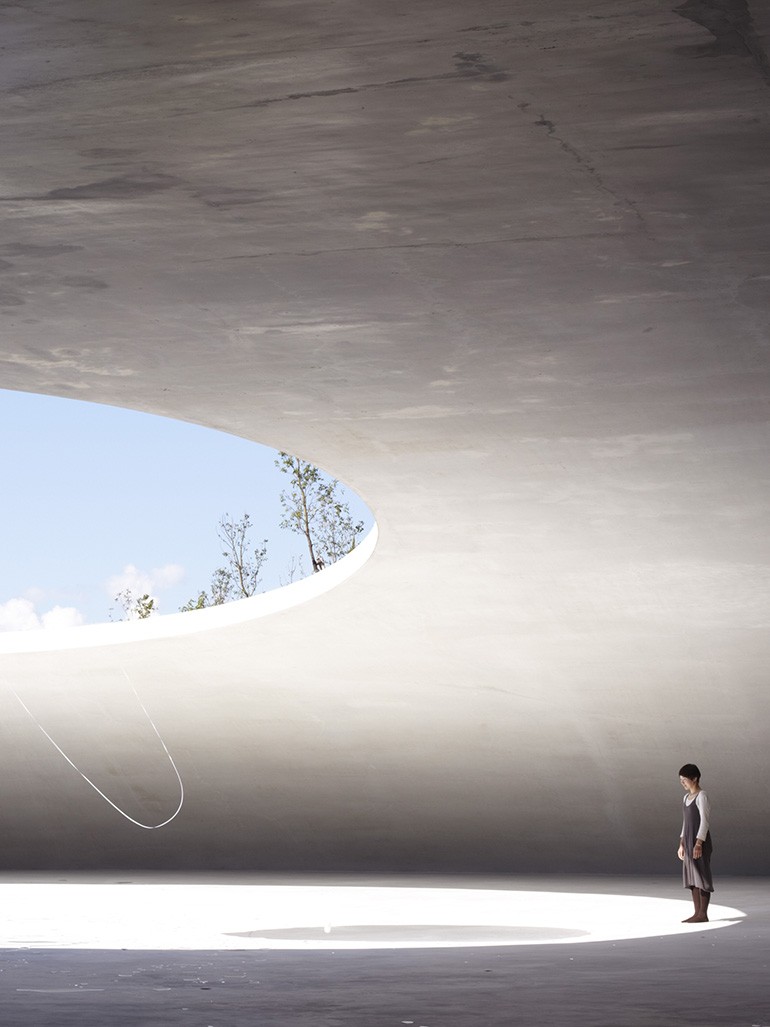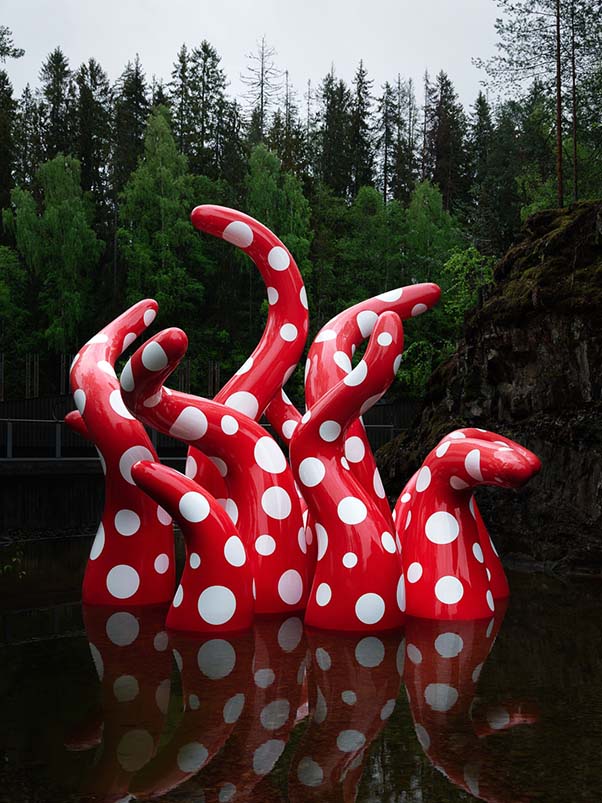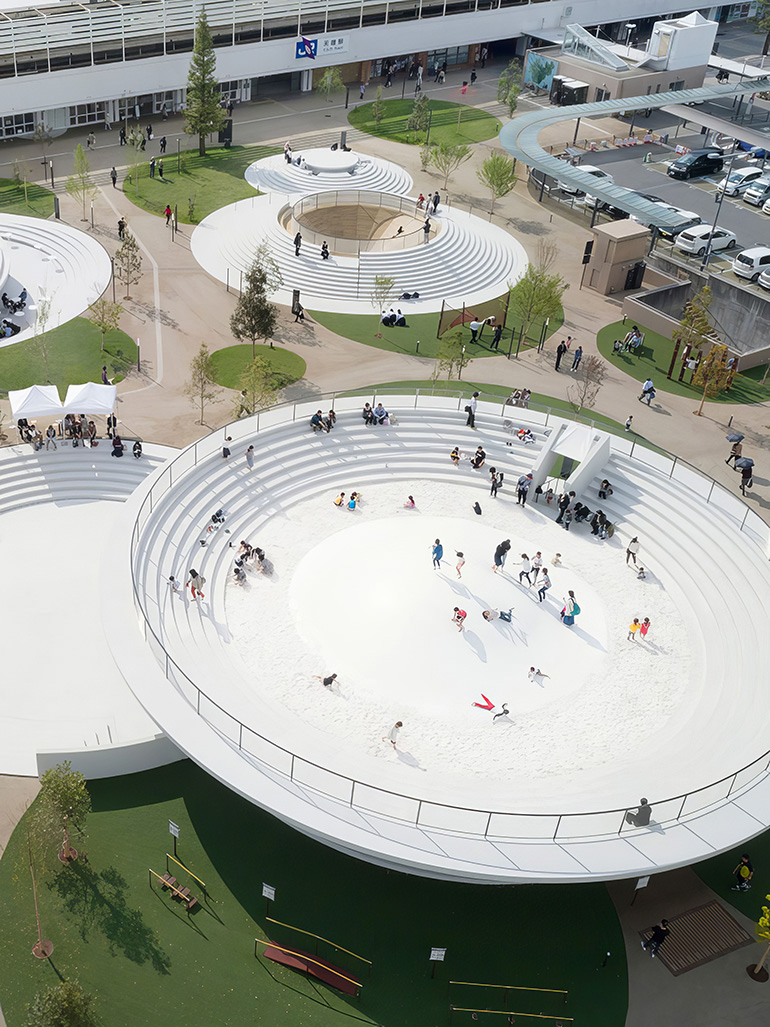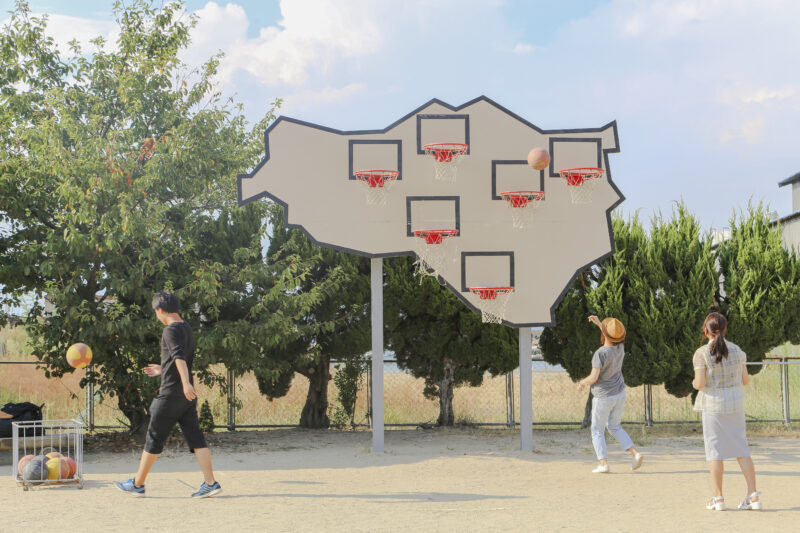
2614 Teshimakarato, Tonosho, Shozu District, Kagawa 761-4662, Japan Copy to clipboard
34.489151, 134.098144 Copy to clipboard
Before you go
Check the weather: Teshima can be hot and humid in summer or windy in winter. Dress appropriately for the season and wear comfortable walking shoes.
Facilities: The island has limited facilities, so plan ahead for necessities like food and water. Restrooms and seating areas are available near major art sites.
Nearby attraction - Les Archives du Cœur (Heartbeat Exhibit): An audio-visual installation by Christian Boltanski located an 8-minute walk from Multibasket. It captures and archives heartbeats from around the world and is a unique, emotional experience.
Reservation not needed: The installation is free to visit and open to the public without reservations.
Supplies: Basketballs are provided on-site, but visitors have noted they are often old or deflated. Bringing your own basketball is recommended if you plan to play.
Visit duration: Plan to spend about 10–20 minutes at Multibasket. It’s an ideal stop while exploring other Teshima attractions.
Best visit time
Visiting the installation is best in spring and fall for the mild weather and scenic beauty.
Spring brings blossoms, and fall offers cooler temperatures with colorful foliage, both enhancing the outdoor artwork experience.
Summer can be extremely hot and humid, making it less pleasant for walking or cycling, while winter might bring cold winds and fewer daylight hours.
Weekdays are quieter, offering a more intimate interaction with the installation. Avoid weekends during the Setouchi Triennale, as the island can become crowded.
Directions
From Teshima Karato Port
By foot: Walk for about 3 minutes from the port towards Karato Community Center.
By bicycle: Ride an electric or regular bike from Karato Port. It's a quick 1-minute ride.
From Teshima Ieura Port
By bus: Take the local bus to Karato Community Center. Check the bus schedule as service is infrequent.
By bicycle: Rent an electric or regular bicycle at Ieura Port. The ride to Karato Community Center takes about 25 minutes and includes steep inclines. Electric bikes are highly recommended for easier navigation.
By ferry
Teshima is accessible by ferry, with services running from Takamatsu and Uno. Takamatsu Port is well-connected to major cities like Osaka and Kyoto via train. Ferry schedules can be infrequent, so plan your trip accordingly.
Parking
Limited parking is available near Karato Community Center. If you're driving, plan to park here and walk the remaining 5 minutes to the installation.
Introduction
Can basketball 1 be more than a game? On the small island of Teshima 2 in Japan’s 3 Seto Inland Sea, Multibasket – No One Wins invites visitors to reconsider competition, collaboration 4, and the intersection of art and play.
Created by conceptual artists Jasmina Llobet & Luis Pons for the Setouchi Triennale art festival, this playful installation experiments with sculptural form while encouraging human interaction 5 and creates a personal and memorable experience akin to an art playground 6.
The lines blur between play and performance, competition and connection, making every visitor both participant and spectator.
This article is informed by our conversation with Jasmina Llobet & Luis Pons.
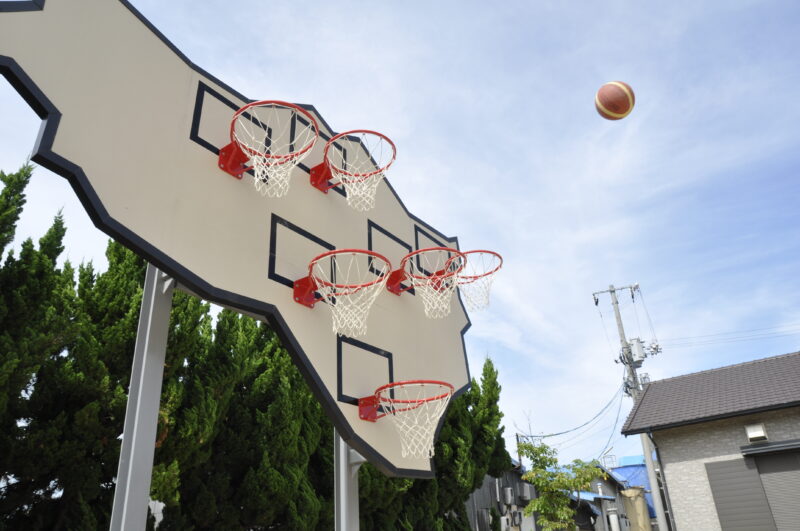
What it is
Approaching along a path leading from the rice fields, visitors encounter a full-sized basketball court sunk into the hillside, with vivid orange backboards and hoops at either end. The backboard, cut in the shape of Teshima, features six hoops that represent the island’s towns, and is therefore designed for simultaneous play by six people.
The court has no dividing lines, with both baskets intertwined at the center in a spiraling form reminiscent of a DNA double helix. The integrated steel sculpture, an artistic intervention in the landscape 7, seems to emerge directly from the land, drawing attention to the relationship between art and nature.
While the intertwined baskets prevent the space from being used for normal basketball games, people are encouraged to pick up one of the available balls from the dusty area and take shots together from either side. The setup invites collective play, with the focus shifted from competitive scoring towards a shared experience between players.
The work highlights ideas of communication and collaboration, as players must coordinate their actions so as not to interfere with shots being taken concurrently from the opposite end of the court. This design not only challenges the conventional structure of a basketball court but also symbolizes the interconnectedness of players and viewers.
The artists commented:
We wanted the sculpture to be functional, playful, and deeply connected to its context.
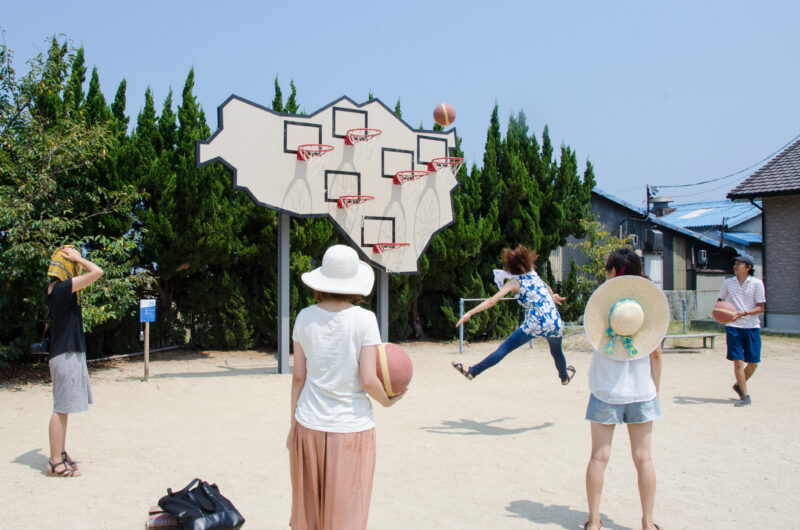
Cultural & social context
Multibasket is a reflection of contemporary art’s shift towards interactive and public engagement. Set in Teshima, it resonates with the cultural ethos of community and collective experiences prevalent in Japanese society. This artwork, by inviting playful interaction in a non-competitive manner, aligns with the communal values and challenges the typically competitive nature of sports.
While deeply rooted in its local context, the artwork also holds global appeal through its universal themes of play, collaboration, and the merging of different artistic disciplines.
It symbolizes a broader movement in the art world that values accessibility, community involvement, and the breaking down of traditional art boundaries, resonating with audiences beyond its immediate cultural setting.
Reflecting on cultural influences, Llobet shared:
The idea of creating an artwork that people could use, without needing to ‘understand’ it, felt very connected to the Japanese appreciation for experience and play.
Llobet and Pons emphasized the importance of context in public art:
We don’t like to create sculptures that become invisible. Public sculptures must mean something to the people who see them every day.
In a world reeling from the effects of the pandemic, interactive public spaces have gained new significance.
Llobet reflected: After the pandemic, people need art more than ever. They need artworks that brings them together in new ways. Interactive public spaces have taken on new meaning. They’re vital for fostering connection.
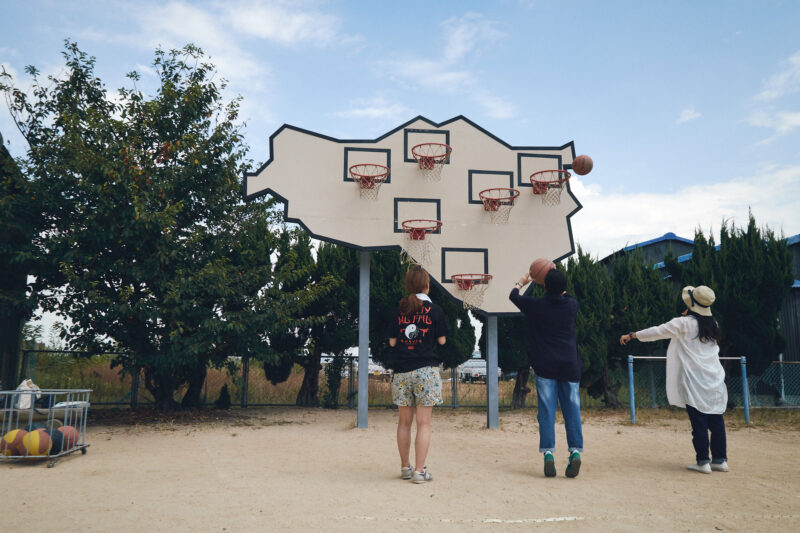
Art meets sport
In combining elements of land art 8, architecture 9, landscape design, and sporting facilities within one integrated structure, Llobet and Pons question traditional boundaries between artistic disciplines.
The sculpture adapts features of a familiar sports arena to a new conceptual purpose, seamlessly blending into the existing coastal environment.
This creative reinterpretation of basketball disrupts traditional team dynamics, fostering an environment where the usual competitive edge gives way to creativity and collaboration, where no one wins.
Like much of the artwork showcased at Setouchi Triennale, this permanent fixture encourages us to view public spaces and structures as fluid intersections of different fields that shape collective life.
Llobet shared:
What I like about this artwork, is that it’s about playing more than seeing art. Of course, it’s an artwork, but the interesting part is that it can be just played without needing to understand it. It’s about creating an experience visitors will remember—maybe even for their whole lives.
The interactive nature of Multibasket aligns with public sculptures like Alamo 1011 by Tony Rosenthal 12, a rotating cube in New York City that invites physical engagement. The artists emphasized their admiration for Alamo, noting how it demonstrates the power of interactivity in public spaces.
Creating the sculpture wasn’t without its challenges. The artists faced both cultural and practical obstacles. When you put an object in a public space, it’s very fragile, they noted. There are storms, and people are playing very rough with the installation and hanging themselves from the hoops. And, of course, this gets very easily broken and deteriorated.
While the artwork’s conceptual and artistic dimensions are compelling, its practical accessibility and inclusivity add another layer of significance.
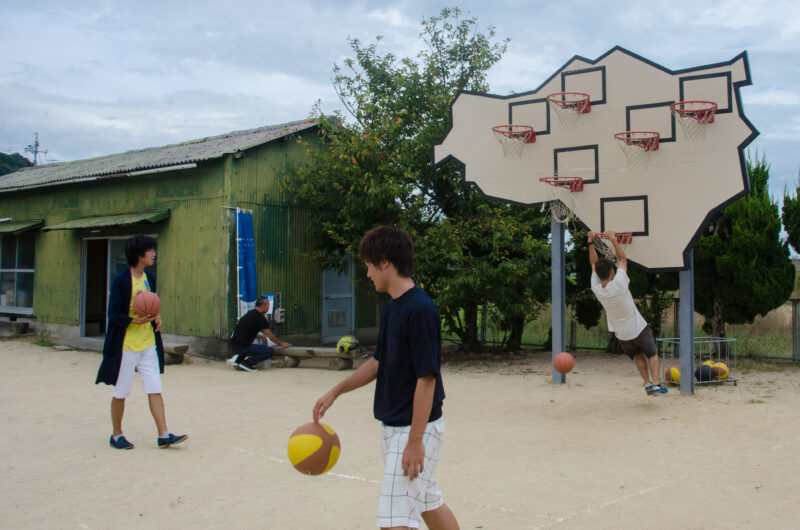
Accessibility & inclusivity
This site-specific 13 installation exemplifies accessibility in art through its public, open-air location and interactive design. It invites participation from a broad audience, regardless of their art expertise or basketball skills, fostering an inclusive environment.
Another visitor was intrigued by the six goals and pondered the ‘right’ way to engage with the installation. They mentioned the condition of the available basketballs, which were old and deflated, raising the question of whether visitors should bring their own.
The lack of competitive structure in the game played here subtly addresses inclusivity, as it reduces barriers created by skill level or physical ability, promoting a more inclusive form of engagement.
This artwork challenges the hierarchies of sport—the taller or fitter doesn’t always win. Instead, we wanted something that levels the playing field and allows anyone to succeed.
Multibasket & Setouchi’s revival
The economic foundation of Teshima primarily revolves around agriculture. The island is facing a demographic challenge, with a declining and aging population due to the movement of residents to larger urban areas. This migration trend is leading to a gradual depopulation of the island, and as a result, its infrastructure is aging and becoming less utilized. There is a noticeable absence of facilities for recreation and sports on the island.
Llobet and Pons commented:
Our motivation was to do something for this community, which is in a very strong process of depopulation. People are fleeing, and our goal was to create a symbol that the community could accept as their own object—a shared experience that encourages identification.
Multibasket reflects the Setouchi Triennale’s vision of revitalizing forgotten rural areas in the Seto Inland Sea through ambitious, site-specific artwork since 2010. The isolated yet peaceful spot selected for this installation allows visitors to contemplate how public artworks can enhance their appreciation of a particular place.
With its exterior basketball court doubling as an informal viewing platform to take in the panoramic views, Multibasket seems to celebrate the rich cultural landscape it has emerged and reconnects people with regional cultures, highlighting a blend of contemporary art with traditional community values.
This approach underscores the power of art in transforming not just physical spaces but also the socio-cultural dynamics of a region, making Teshima a model for rural rejuvenation through artistic innovation.
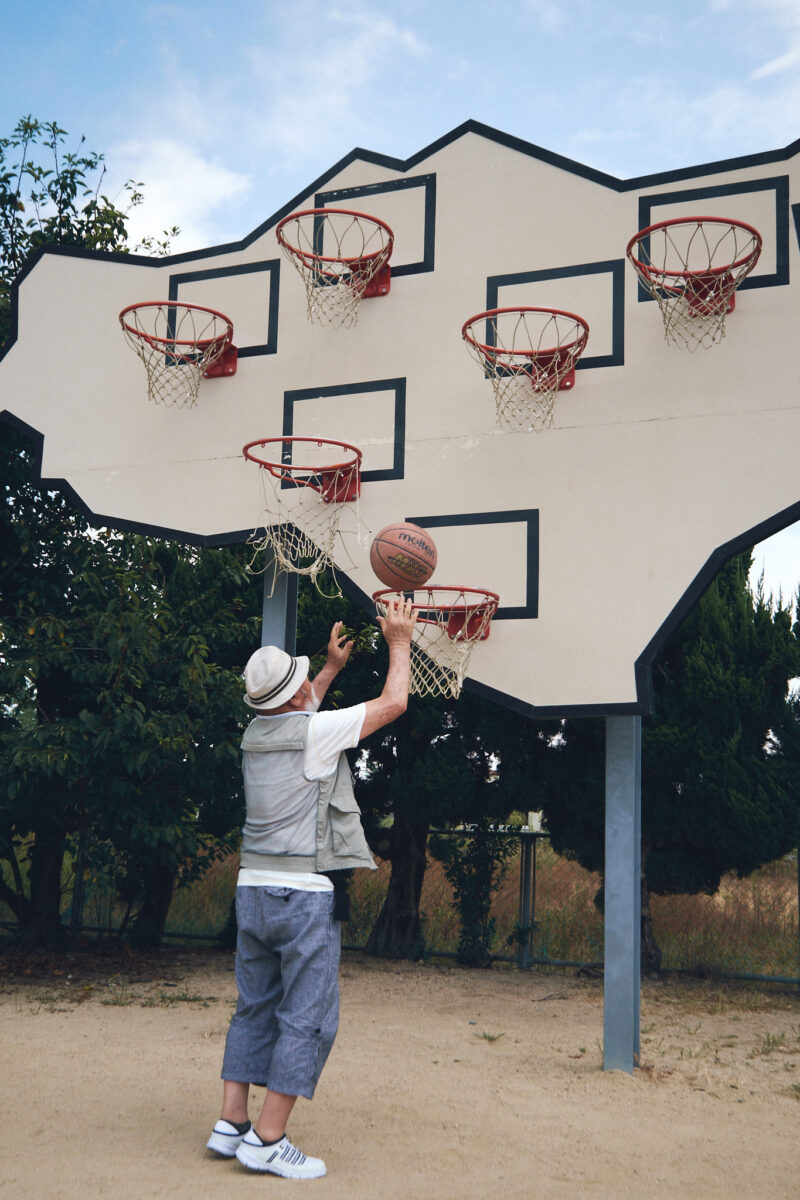
Art on Teshima Island
Teshima is emerging as a pivotal site for integrating art with nature. Multibasket, situated a short 16-minute walk from the Teshima Art Museum 1415, exemplifies this commitment by harmoniously fusing art into the natural landscape. The Teshima Art Museum offers a unique environment where art transcends traditional boundaries, merging seamlessly with its surroundings.
While the museum uses architectural ingenuity to create a space where nature becomes integral to the art experience, Multibasket invites direct physical engagement from visitors, turning them into active participants rather than passive viewers. Visitors are not just observers but participants, engaging in a game that emphasizes collaboration over competition.
About the artists: Llobet & Pons
Jasmina Llobet and Luis Pons, a Barcelona-based conceptual art 16 duo, are known for their site-specific sculptures and urban interventions. Their collaborative practice combines architecture, design, and visual arts in experimental ways, often incorporating everyday structural elements like basketball hoops or benches.
Works such as Multibasket emerge from a creative vision to transform public spaces 17 into places for alternative kinds of social interaction and artistic experience.
Llobet & Pons draw inspiration from the works of Allora & Calzadilla 18 and Francis Alÿs 19, artists known for their ability to blend art with performance and public interaction.
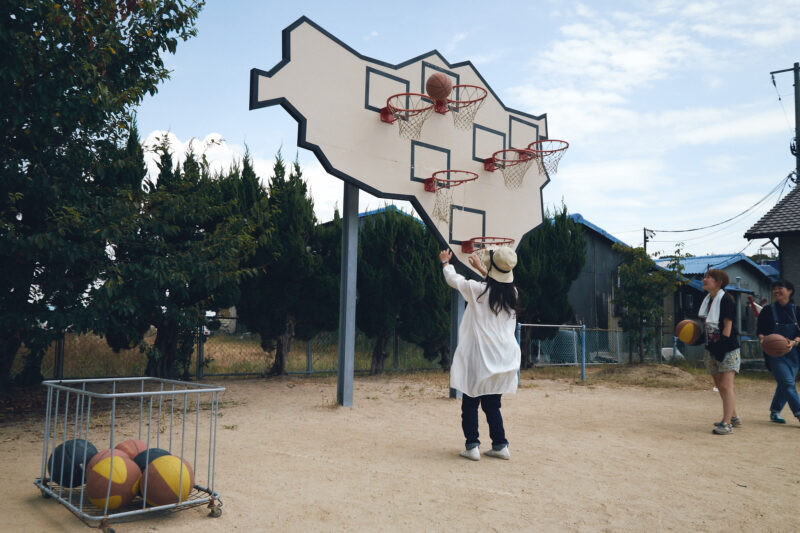
Final words
Llobet and Pons invite us to rethink traditional notions of art and interaction, placing collaboration at the heart of their work. Multibasket isn’t just a modified version of basketball. It’s an invitation to engage with art in a way that redefines boundaries.
At its core, Multibasket invites us to reimagine not just basketball but the very rules we live by. As the artists put it:
You can always change the rules. There are countless possibilities.
As visitors shoot hoops under the sun and invent new rules on Teshima’s Multibasket, the artwork quietly reshapes their understanding of sport, play, and community. Llobet & Pons remind us that art doesn’t need walls or pedestals. It can thrive wherever people gather and connect.
In a world increasingly divided, could more playful interventions like this help us rediscover the simple joy of collaboration? Multibasket suggests the answer isn’t about winning or losing. It’s about the experience shared along the way.
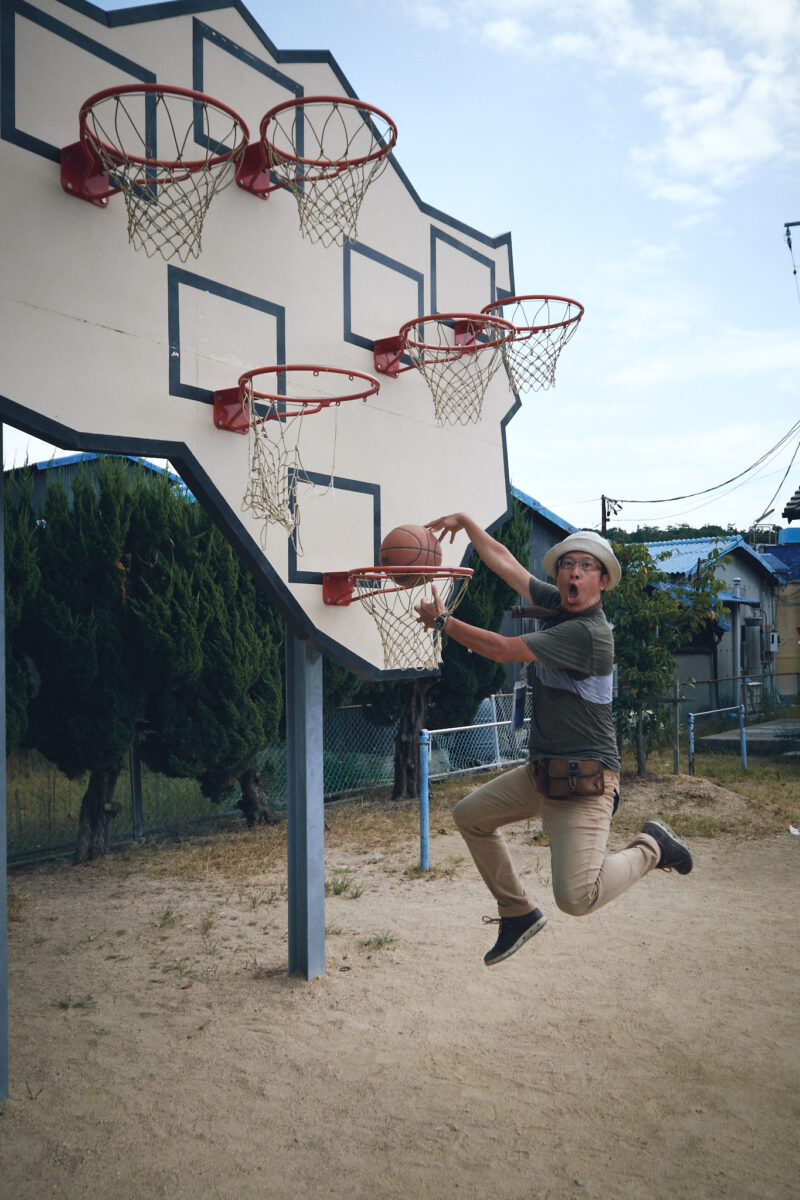
Explore nearby
Teshima, Seto Inland Sea, Japan
 Teshima Art Museum by Ryue Nishizawa1 km away
Teshima Art Museum by Ryue Nishizawa1 km away
 Nendo’s Tenri Station Plaza CoFuFun159 km away
Nendo’s Tenri Station Plaza CoFuFun159 km away- Nabana no Sato's winter illuminationInstallation ended (dismantled)247 km away
